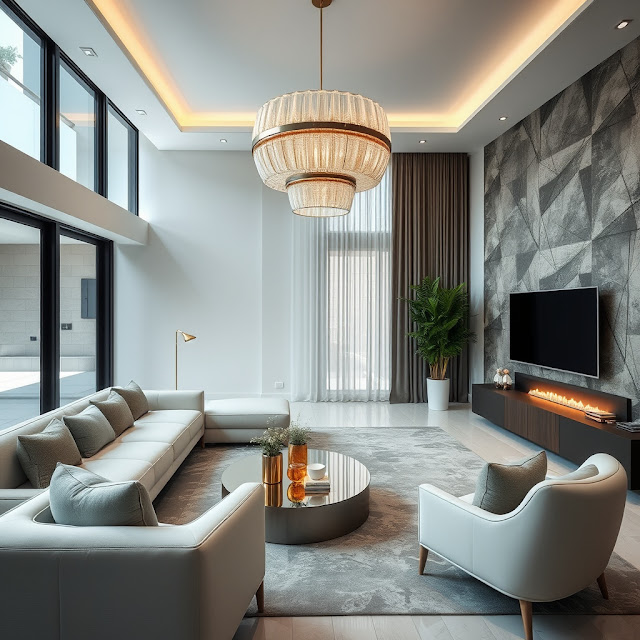Introduction
Aluminium, once considered a precious metal on par with gold and silver, has evolved into a ubiquitous material in modern architecture, revolutionizing the way buildings are designed, constructed, and experienced. Its lightweight yet robust properties, coupled with its versatility and sustainability, have propelled aluminium to the forefront of architectural innovation. This article explores the multifaceted use of aluminium in architecture, highlighting its diverse applications, benefits, and transformative impact on the built environment.
The Rise of Aluminium in Architecture
Aluminium's journey in architecture began in the early 20th century, spurred by advancements in metallurgy and manufacturing techniques. Its abundance, lightweight nature, corrosion resistance, and recyclability quickly caught the attention of architects and engineers seeking alternatives to traditional building materials.
Diverse Applications in Architecture
1. Structural Systems: Aluminium's strength-to-weight ratio makes it an ideal choice for structural systems in architecture. From curtain wall framing to roofing structures, aluminium provides structural integrity while reducing dead loads on buildings, enabling the creation of soaring spaces and innovative designs.
2. Cladding and Facades: Aluminium panels and composite materials are widely used for cladding and facade systems in modern architecture. Its ability to be formed into various shapes, textures, and finishes allows architects to create striking and dynamic exteriors that enhance the visual appeal of buildings.
3. Windows and Doors: Aluminium's durability, slim profiles, and thermal performance make it a preferred material for windows and doors in contemporary architecture. Its inherent strength allows for larger expanses of glazing, maximizing natural light and views while maintaining energy efficiency and security.
4. Interior Design Elements: Aluminium is integrated into interior design elements such as partitions, railings, ceilings, and furniture, offering sleek and modern aesthetics that complement a wide range of architectural styles. Its malleability allows for intricate detailing and custom fabrication to meet design requirements.
Benefits of Aluminium in Architecture
1. Lightweight and Strong: Aluminium's lightweight nature makes it easy to transport, handle, and install, reducing construction time and costs. Despite its low weight, aluminium is incredibly strong and durable, providing structural stability and longevity to architectural elements.
2. Corrosion Resistance: Aluminium naturally forms a protective oxide layer when exposed to air, making it highly resistant to corrosion, rust, and degradation. This property ensures the longevity and low maintenance requirements of aluminium-based architectural components.
3. Thermal Efficiency: Aluminium's thermal conductivity can be optimized through thermal break technology, enhancing energy efficiency and reducing heating and cooling costs in buildings. This makes it an environmentally sustainable choice for architectural applications.
4. Recyclability: Aluminium is infinitely recyclable without loss of quality, making it a highly sustainable material in architecture. Its recyclability contributes to resource conservation, waste reduction, and the circular economy principles embraced by modern architectural practices.
Iconic Examples of Aluminium in Architecture
1. Sydney Opera House, Australia: The iconic sail-like roof structures of the Sydney Opera House are clad in aluminium panels, showcasing the material's versatility and aesthetic appeal in architectural expression.
2. Burj Khalifa, UAE: The world's tallest building, Burj Khalifa, features aluminium and glass curtain wall systems that contribute to its sleek and futuristic facade, embodying the cutting-edge design and engineering advancements of modern architecture.
3. Guggenheim Museum Bilbao, Spain: The undulating titanium-clad facade of the Guggenheim Museum Bilbao has become synonymous with contemporary architecture. While not aluminium, the use of lightweight metals highlights the trend towards innovative and expressive building envelopes.
Conclusion
Aluminium has emerged as a transformative material in architecture, offering unparalleled versatility, durability, and sustainability. From structural systems to cladding, windows, and interior design elements, aluminium's influence in shaping the built environment is undeniable. As architects continue to push the boundaries of design innovation and sustainability, aluminium will undoubtedly remain a cornerstone material in the future of architecture, enabling the creation of bold, efficient, and iconic architectural masterpieces.



























No comments:
Post a Comment